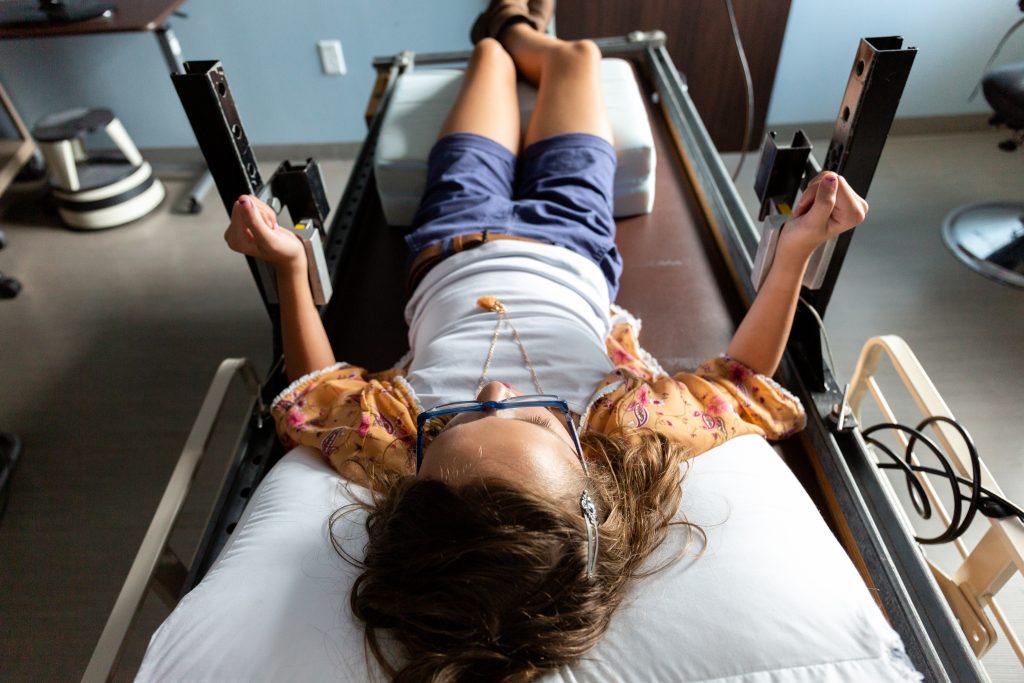Injury to innovation: Kinesiologist retrofits objects to aid rehabilitation

Before Deanna Kennedy was an assistant professor in the Department of Health and Kinesiology, she taught a gymnastics course at Texas A&M University. From this class, she sustained an injury that would change the course of her life forever.
During a lecture, with her body turned toward her students, she modeled a cartwheel on the balance beam that dislocated her patella. After multiple surgeries, 10 months on crutches and rigorous physical therapy, she was still left walking with a limp and cane.
“I was working hard and not getting better,” Kennedy said. “It took me a moment until I thought, ‘This is my research—bimanual coordination and neural crosstalk’. So I started training my good leg hoping for some benefits in my bad leg.”
Kennedy studies how the ability to coordinate limbs together to complete a task can have positive effects on stroke rehabilitation and injuries like her own. Simple tasks like tying shoes, buttoning a shirt and driving all require bimanual coordination.
Kennedy is particularly interested in multi-frequency coordination patterns, where limbs must move at different rates. For example, tapping three times with one hand while concurrently tapping two times with another is nearly impossible without extensive practice.
“Early research looking at these multi-frequency coordination patterns would provide drummers and piano players eight days of practice to do these tasks,” Kennedy said. “ With my research, I look at simplified feedback information to trick someone into doing these patterns relatively quickly.”
Kennedy utilizes Lissajous plots to incorporate information from the left and right limb into a single point. Lissajous plots, also known as the Lissajous curve, are the graphs of a system of parametric equations that depict complex harmonic motion.
“This is a lot like playing a video game where you are controlling one avatar with two different thumbs,” Kennedy said. “I use that type of feedback to get my participants to do these tasks and while they are doing it, I can look at the interference between the left and right hemisphere.”
Kennedy utilizes video games heavily in her research. She built her own driving simulator, which typically costs about $30,000 for research-grade. She used a gaming chair and a Microsoft system that she coded with MATLAB to fit her needs. The rig enables her to monitor the coordination between the steering limbs and how quickly they can react in conjunction with the brake foot.
She also adapts objects like tattoo parlor chairs and hospital beds to conduct trials. Receptors on participant’s limbs translate to a single cursor point on a screen where they attempt to follow along a general template.
“In these exercises, the left arm will control up and down movement of that plot and the right arm will control back and forth,” Kennedy said.
After incorporating this research into her recovery, Kennedy shed her limp and became active again. She hopes she can help stroke patients and people like herself, who require more than typical physical therapy for full recovery.
“In someone that has an injury on one side of their body, whether it be from stroke or something else, they are losing that neural drive,” Kennedy said. “If we can tap into the interference signals, we can use those signals for recovery.”
Kennedy’s research was made possible through funding from the Texas A&M Program to Enhance Scholarly and Creative Activities (PESCA) and the Texas A&M Triads for Transformation (T3) program.

